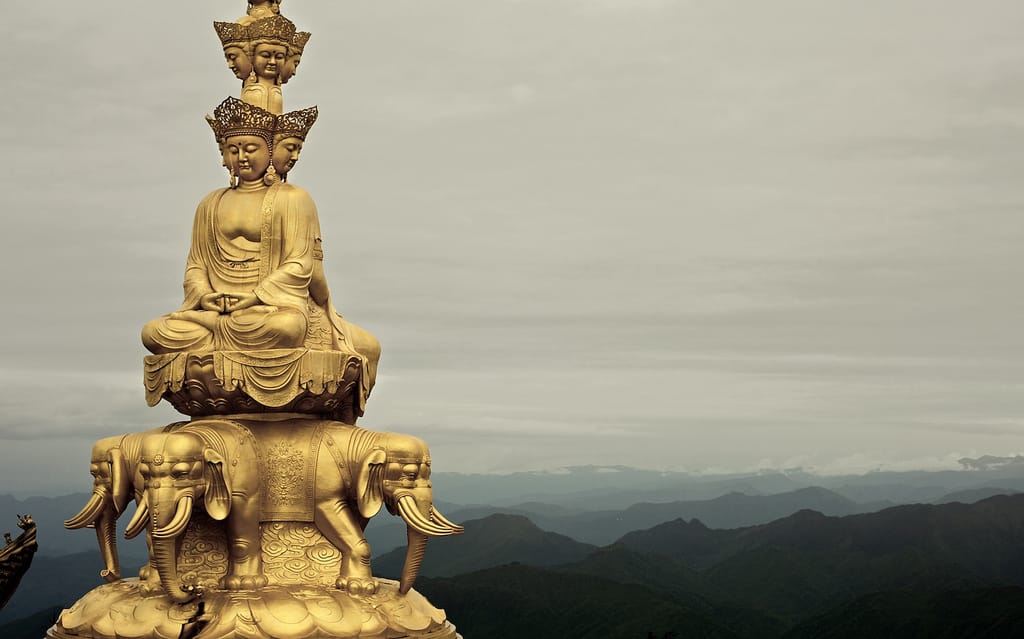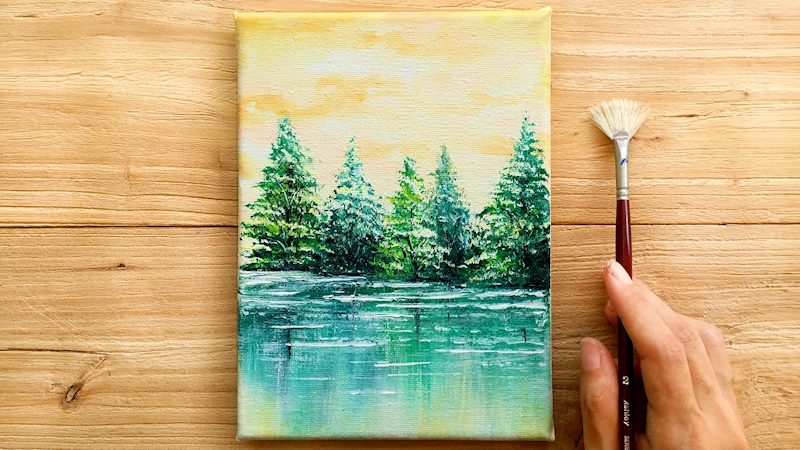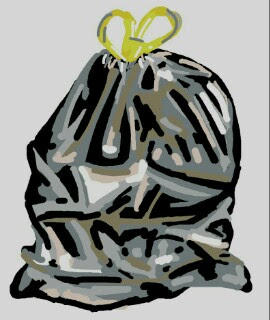Dear All,
We will continue with the rest of the chapter now, from "And Thus This Book" to the end.
Please consider our previous lesson to have been like musical or language study, in which we are trying to mimic the solos of a master musician, or the expressions of a native speaker, in order to get an ear and feel for the same.
In this section, however, I remind folks that Dogen's jazz was not merely wild sounds and interesting wordplay. He was working from, and seeking to express, the standard Zen and Mahayana teachings. Thus, it is necessary to have some sense and understanding of what those teachings are, and what they wish us to understand, in order to get what Dogen is trying to express.
One example would be the Hua-yan (Flower Garland) vision of the inter-identity, inter-penetration and inter-manifestation of all phenomena, people, things, times, places and spaces. Soto Zen priest and historian, Taigen Leighton, has an article here for anyone who wishes to probe deeper:
One Hua-yan model is of the Golden Lion. There is a logic to it, but a bit unlike our ordinary daily sense of what is logical (although a physicist friend of mine attempted to explain to me once that there is an amazing similarity to certain holographic models of the universe). In a nutshell, imagine that there is a lion statue made of gold, with many distinct parts such as countless single strands of fur, each claw and eye, the tail, etc. etc.

Usually, most "common sense" folks would say that each strand of fur is separate from each other strand, and different from claw, eye and tail. As well, claw is not eye, eye is not tail, tail is not claw. Furthermore, all are just parts of the whole lion, and not the whole thing itself.
However, Hua-yan philosophers had another vision, experienced in Zazen, that goes something like this:
Since each strand of fur is the same gold of the lion, and each claw, eye and tail is the same golden lion, each hair is each/all of the other hairs, and each hair is each/all of the claws, eyes, head to tail, thoroughly, because "golden lion = golden lion." It is something like saying that "Paris" is precisely "New York City" located in France, and that the "Amazon river" is the "planet Mars" flowing in Brazil!

Furthermore, each single hair is and holds within and fully expresses the whole lion. It is something like saying that each tiny hair physically contains the whole lion within it, and every other hair, eye or claw within it individually and as groups, rather than just the lion having the hair on part of its hide, or the lion just being a place where the hair, eye, tail and claw share a common home. The claw, eye and tail, of course, also fully embody all the others, and the whole lion too! It is something like saying that every hair on Stewart's head is Stewart, and Stewart's left big toe is Stewart, so every hair of Stewart is simply the big toe growing on Stewart's head, and each and all thoroughly contain and are all of Stewart. Stewart is not just a fellow with hair and toes. Stewart is nothing more nor less than a single strand of hair on his own head which embodies all of him with nothing remaining, and which also happens to be his big toe!

That is the case even though, from another angle, a claw is obviously not an eye, and the tail is different from a claw. Hair is not toe. All these perspective(s) are true at once.

This realization is a key medicine for our human Dukkha, in which we feel just like a separate self, here today, dead tomorrow, tiny forgotten dust particles in this amazingly vast universe.
In my book, I write this:
Your Assignment:
Take two (2) seemingly very unrelated things (or people, times, places) of the universe ... you choose, but the more unrelated the better, e.g. (don't use these examples, please choose your own!) "baseball cap" and "dog" or (even better, because the apparently more unrelated the better) "Taj Mahal ticket booth at 5:16 pm" and "squeaky rolling shopping cart wheel" and ... following the basic content and grammar patterns of my two paragraphs above ... express their intimate identity in the same manner that I do for "cup of tea" and "mountain."
I hope this assignment is your cup of tea, and not too high a mountain.
Good luck!

Gassho, Jundo
STLah
We will continue with the rest of the chapter now, from "And Thus This Book" to the end.
Please consider our previous lesson to have been like musical or language study, in which we are trying to mimic the solos of a master musician, or the expressions of a native speaker, in order to get an ear and feel for the same.
In this section, however, I remind folks that Dogen's jazz was not merely wild sounds and interesting wordplay. He was working from, and seeking to express, the standard Zen and Mahayana teachings. Thus, it is necessary to have some sense and understanding of what those teachings are, and what they wish us to understand, in order to get what Dogen is trying to express.
One example would be the Hua-yan (Flower Garland) vision of the inter-identity, inter-penetration and inter-manifestation of all phenomena, people, things, times, places and spaces. Soto Zen priest and historian, Taigen Leighton, has an article here for anyone who wishes to probe deeper:
One Hua-yan model is of the Golden Lion. There is a logic to it, but a bit unlike our ordinary daily sense of what is logical (although a physicist friend of mine attempted to explain to me once that there is an amazing similarity to certain holographic models of the universe). In a nutshell, imagine that there is a lion statue made of gold, with many distinct parts such as countless single strands of fur, each claw and eye, the tail, etc. etc.

Usually, most "common sense" folks would say that each strand of fur is separate from each other strand, and different from claw, eye and tail. As well, claw is not eye, eye is not tail, tail is not claw. Furthermore, all are just parts of the whole lion, and not the whole thing itself.
However, Hua-yan philosophers had another vision, experienced in Zazen, that goes something like this:
Since each strand of fur is the same gold of the lion, and each claw, eye and tail is the same golden lion, each hair is each/all of the other hairs, and each hair is each/all of the claws, eyes, head to tail, thoroughly, because "golden lion = golden lion." It is something like saying that "Paris" is precisely "New York City" located in France, and that the "Amazon river" is the "planet Mars" flowing in Brazil!

Furthermore, each single hair is and holds within and fully expresses the whole lion. It is something like saying that each tiny hair physically contains the whole lion within it, and every other hair, eye or claw within it individually and as groups, rather than just the lion having the hair on part of its hide, or the lion just being a place where the hair, eye, tail and claw share a common home. The claw, eye and tail, of course, also fully embody all the others, and the whole lion too! It is something like saying that every hair on Stewart's head is Stewart, and Stewart's left big toe is Stewart, so every hair of Stewart is simply the big toe growing on Stewart's head, and each and all thoroughly contain and are all of Stewart. Stewart is not just a fellow with hair and toes. Stewart is nothing more nor less than a single strand of hair on his own head which embodies all of him with nothing remaining, and which also happens to be his big toe!

That is the case even though, from another angle, a claw is obviously not an eye, and the tail is different from a claw. Hair is not toe. All these perspective(s) are true at once.

This realization is a key medicine for our human Dukkha, in which we feel just like a separate self, here today, dead tomorrow, tiny forgotten dust particles in this amazingly vast universe.
In my book, I write this:
[I]n our ordinary experience of life, a mountain is not a cup of tea, and neither a mountain nor a cup of tea are you or me. A is not B, and neither one is C nor D. However, for Mahayana teachers like Dōgen, mountains are mountains and also cups of tea. Tiny teacups hold great mountains within, as well as the whole world and all of time. Mountains quench our thirst, mountains walk and preach the Dharma, and mountains are also other faces of you and me. It is not merely that our ordinary eyes might see a nearby mountain reflected on the liquid inside a cup, or painted on its side, or reflected like a kaleidoscope in each poured drop, but that the mountain and the whole universe is truly poured and held in every drop of tea to be tasted, and is contained in the cup itself. The teacup, though held in our hands, is also huge, boundless, as big as a mountain and the whole universe. The whole universe is just a great vessel which is also the vessel in our hands—a vessel that cradles our hands as we cradle it. (If this is hard to get your mind around, it is fine to approach it in a poetic sense until, on the zazen cushion, one can actually realize such truths.)
When we drink tea, as it enters our mouth and we taste it on our tongue and it merges with our body, we too enter the tea, are tasted by and merge with it. Likewise, in drinking tea we enter the mountains and the whole universe. The tea swallows us as we swallow the tea, and the mountain/universe drinks us as we drink the mountain/universe—all in the simple action of tasting a cup of tea. The tea steeps all time and space as you steep tea; the mountain pours the universe as the universe moves with your hands when pouring a cup. Each drop of tea, each inch of the mountain or atom of the universe glitters as a unique and precious jewel, each unique and whole unto itself, yet each is also the all. That is the kind of world vision that Dōgen is usually expressing.
When we drink tea, as it enters our mouth and we taste it on our tongue and it merges with our body, we too enter the tea, are tasted by and merge with it. Likewise, in drinking tea we enter the mountains and the whole universe. The tea swallows us as we swallow the tea, and the mountain/universe drinks us as we drink the mountain/universe—all in the simple action of tasting a cup of tea. The tea steeps all time and space as you steep tea; the mountain pours the universe as the universe moves with your hands when pouring a cup. Each drop of tea, each inch of the mountain or atom of the universe glitters as a unique and precious jewel, each unique and whole unto itself, yet each is also the all. That is the kind of world vision that Dōgen is usually expressing.
Take two (2) seemingly very unrelated things (or people, times, places) of the universe ... you choose, but the more unrelated the better, e.g. (don't use these examples, please choose your own!) "baseball cap" and "dog" or (even better, because the apparently more unrelated the better) "Taj Mahal ticket booth at 5:16 pm" and "squeaky rolling shopping cart wheel" and ... following the basic content and grammar patterns of my two paragraphs above ... express their intimate identity in the same manner that I do for "cup of tea" and "mountain."
I hope this assignment is your cup of tea, and not too high a mountain.

Good luck!

Gassho, Jundo
STLah















Comment